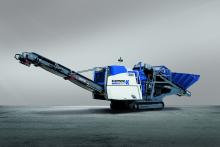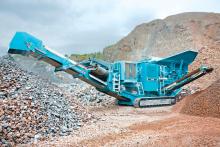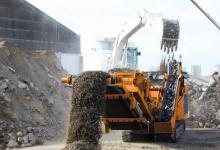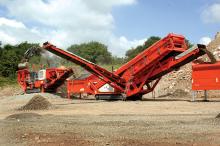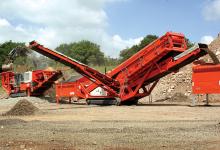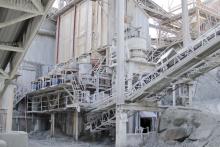
Acceptance of recycled aggregates is growing and the latest crushers and screens aimed at this market are offering higher productivity to meet demand
While virgin aggregate demand has fallen in most countries across Europe as the recession impacts on construction markets, the call for recycled materials has remained good. This is being driven by a combination of an increased acceptance of secondary aggregates as high quality products and the current need in the market to get best value and work sustainably.
"It is one of the few equipment markets that is not suffering from the downturn," said
Recycling projects are generally undertaken by contractors but as many contractors want to be able to work in both primary and secondary aggregates markets, they need dual purpose equipment.
"Some of the big quarry operators have a block on capital expenditure and are turning to contractors more and more to help meet demand," said
"With recycling machines it will always be a case of balancing production with transport weight." While the size of recycling machines is unlikely to increase, addition of new features is also helping to boost productivity.
"One of the latest developments on our machines is the vibrating pre-screen that helps to remove fine material before crushing so you are only placing the material into the hopper that actually needs to be crushed," said Norris. "This has benefits for both quarry operations and recycling." Nethery also believes that screening developments are benefitting the recycling market. "One of the main developments for the recycling market is scalping screens, but these also have quarry applications such as screening at the face or processing overburden," he said. "The screening media used for recycling applications has also been developed to be more aggressive than quarry screens. The media used generally features punched plates, tines or grizzlies." Recirculating conveyors is another development that is benefiting recycling customers as well as quarry users - it gives operators the ability to return oversize material to the crusher with one machine. "These conveyors allow contractors to produce 0-40mm material from just one impactor," said Nethery.
Another feature that is becoming more frequently specified is overband magnets to remove rebar, not just to prevent this entering the crushing chamber, but also to separate the waste and create a potential additional revenue stream.
According to Nethery, while recycling jobs are generally smaller than quarry contracts, the material handled is much rougher and places more demands on machine durability. He said that future machine developments are likely to further improve reliability. "The next generation of machines is likely to be smaller but still offer the same productivity to ease transportation," he said. "But there are more improvements and fine tuning of the technology to come."

